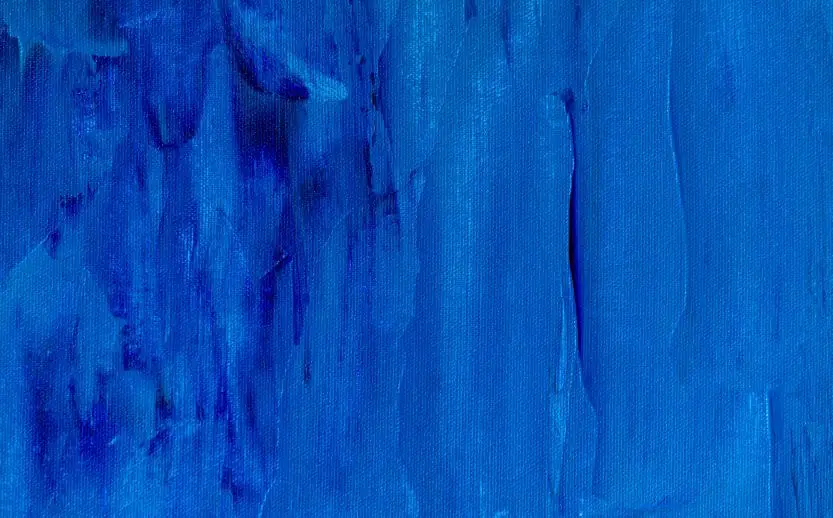Blue is the color universally liked by both women and men. They say, the reason for this is that during the evolutionary stage of humankind, for survival, they would try to migrate towards clean water and clear skies. It is therefore, no surprise that artists of all ages preferred the blue hue over everything else. Here, we will focus on understanding how blue pigments were originally made.
Unlike, other earthly colors like brown and green, blue is not naturally available as pigments for use. Blue cannot be created by simply grinding the sky with pestle and throwing it on a canvas. According to research the color blue is supposed to have a calming effect on individuals.
Even when synthetically created, initially the blue pigments were in extreme short supply. Because of the rarity and the transformation it brings about when applied to anything they were voraciously sought after. Blue pigments played a major role in the advancement of trade, artistic and scientific workarounds in the Middle Ages.
A brief lesson in history:
The color blue was always associated with Earth’s two greatest natural occurrences: the ocean and the sky. The color blue was the first color to ever be synthesized artificially. This was achieved around 2200 BC by the Egyptians. This invention happened around the same time as the pyramids were built.
Let us now take a look at the types of blue pigments available and how they originated.
Egyptian Blue:
This was the first synthetically developed pigment. The Egyptians used a combination of sand and limestone. The sand they used contained some minerals which had traces of copper in it. These minerals were in most cases Malachite or Azurite. This mixture was then heated to a temperature of 1470 to 1650 Fahrenheit (ca. 899 degree Celsius). After cooling, the result was an opaque glass-like object with a blue hue.

This could then be crushed and then mixed with certain glues, gums or even egg whites to create a paint which is long-lasting and has a glaze.
In 2006, Giovanni Verri, a conservation scientist, made a remarkable discovery. He realized that Egyptian Blue pigments glowed when viewed under fluorescent light. He witnessed this when examining a Greek marble basin, which was 2500 years old, under fluorescent lights. Thus, it was established that Egyptian blue does emit infrared radiation.
This happens even if there is no blue hue visible to the naked eye or even if the object has been washed. This discovery has helped in isolating colors found in ancient artifacts.
This Egyptian blue remained popular through the ages and was even seen in various works of art from Roman Empire. The only drawback to this was the complex manufacturing process. A small mistake during the making process would ruin the entire sample.
So, new blues were invented to overcome this issue.
Ultramarine:
Ultramarines are referred to as “true blue”. This blue color is produced from the gemstone Lapis lazuli. For the longest time, this stone was native to a single range of mountains in Afghanistan.
Early Egyptians from the 6th Century used to make jewelry with this stone by importing them in huge quantities. But they could never make a pigment out of it. Oxidation of the minerals that make up the stone would result in the color of the stone turn from bright blue to dull gray.

It was only after it was found in pigment form in some Buddhist paintings that Italian traders started importing it into Europe in the 14th and 15th Century. The blue color of ultramarine is spectacular and has a royal deep quality. So, it quickly became one of the most sought after items among artists and royalty.
So much was its popularity that the cost of procuring ultramarine was the same as that of Gold.
Ultramarine can be seen in a lot of paintings from that period. ‘Girl with a pearl earring’ by Johannes Vermeer and ‘Virgin and child with Female Saints’ by Gérard David are some of the most prominent works to feature ultramarine in their finest glory.
Indigo:
While ultramarine was extremely expensive to possess in pigment form, Indigo was abundantly available. Although Indigo is widely regarded as a shade of blue, in the color spectrum, it does have its own band.
Indigo trading was in fact so popular that it actually started the trade wars between Europe and America, further fuelling slave trade.
As opposed to ultramarine, Indigo was a natural dye and not a pigment. It has been used extensively used to color fabrics, yarns, tapestries and clothing. Indigo dyes from plantations became the most sought after trade commodity.
The world moved by natural Indigo dye to synthetic colors somewhere in the late 19th century.
Cobalt Blue:
Back in the 8th and 9th Century, Cobalt Blue was very popular among the Chinese who used it to color their ceramic items. This cobalt blue was in an impure form. But the Chinese continued to use it for almost 8 centuries.
But it wasn’t until 1802 that Louis Jacques Thénard, a French chemist, discovered an alumina based purer form of Cobalt blue. Immediately after, France began mass production of the color.
It also served as an alternative to the more expensive ultramarine for several artists like Vincent van Gogh, Pierre-Auguste Renoir and J. M. W. Turner.
Another name for Cobalt blue is Parrish blue in honor of Maxfield Parrish, an artist who used it extensively to create his intensely blue and distinct sky shapes.
Prussian Blue:
This is what we call as a happy accident. Johann Jacob Diesbach, a German dye maker, was trying to create a new shade of red. One of the materials he was using, potash, became tainted with animal blood. Potash is itself red in color and when mixed with blood, he expected it to turn even more red. Instead, a chemical reaction ensued and the material turned it into a blue which was vibrant.
The reaction created a chemical called ferrocyanide which resulted in the distinct color. In German, it was called Berliner Blau and in English it was called Prussian Blue.
Prussian Blue was more than just a blue pigment. As a pigment a lot of artists used it, including Pablo Picasso. John Herschel, an English astronomer, discovered in 1842, that Prussian Blue had a sensitivity to light that was unique. This sensitivity could be manipulated and could be used in creating copies of drawings.
This is the origin of the word “blueprints”, after the copies made took on the color of the Prussian blue.
The more recent usage of Prussian blue is as an antidote for poisoning by heavy metals.
International Klein Blue:
Yves Klein, in 1960, through extensive research and experiments created what we call the IKB or International Klein Blue. IKB was a matte version of the French ultramarine. French ultramarine was the artificial synthetic pigment created to replace the ultramarine from Lapis Lazuli.
He patented IKB and soon a lot of people were trying to come up with their own versions of blue pigments using ultramarine. But none have gained as much popularity as International Klein blue.
International Klein blue has featured in many works of art. There has been a movie by the name ‘Blue’, made by Derek Jarman used a shade of IKB as the backdrop for the entire movie.

There is even an Australian band, who have taken inspiration from International Klein Blue and call themselves Yves Klein Blue.
YInMn:
This is the latest entrant in the blue pigment race. This is the result of another happy accident. Mas Subramanian, a chemist at Oregon State University, and his students were in the process of experimenting with some new materials. They wanted to use these materials to manufacture electronics.
A keen student observed that one of their intended samples had turned a shade of bright blue under heat. They named this shade YInMn blue. The name is an abbreviated combination of the elements that make up the chemical composition of the color. Y stands for Yttrium. In stands for Indium. Mn stands for Manganese.
After extensive testing for any side effects and on completion of their research, Subramanian signalled that this new pigment can be commercially produced in June 2016.
The color turned out to be safe, durable and easy to produce. It was later discovered that the color also possesses the ability to absorb heat. The possibilities of using this feature is endless and the most basic use is as a roofing material that will keep the interior of any structure cool.
Samples of the color was also sent to various artists for painting as well.
The color blue has been the cause for and has promoted more trade than any other color. Blue is one of the most significant developments in the artistic world and it is important to understand how blue pigments were originally made.




